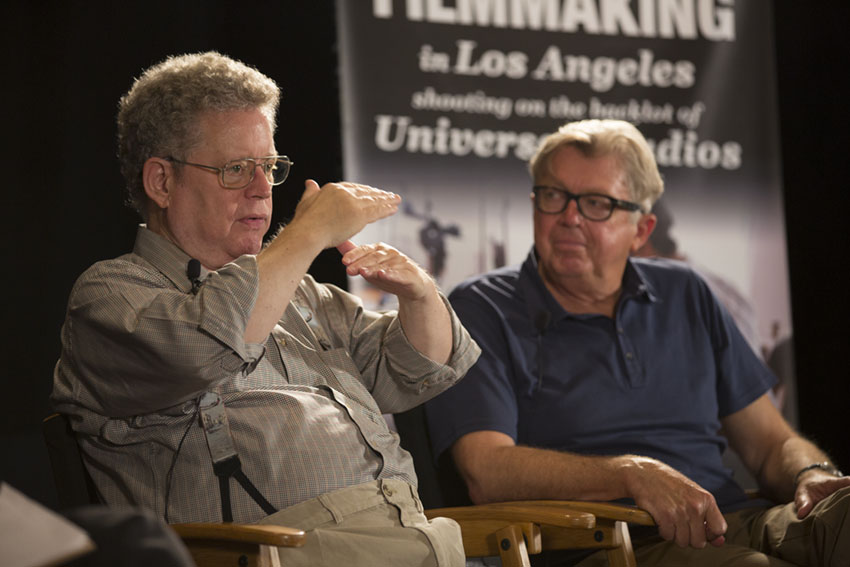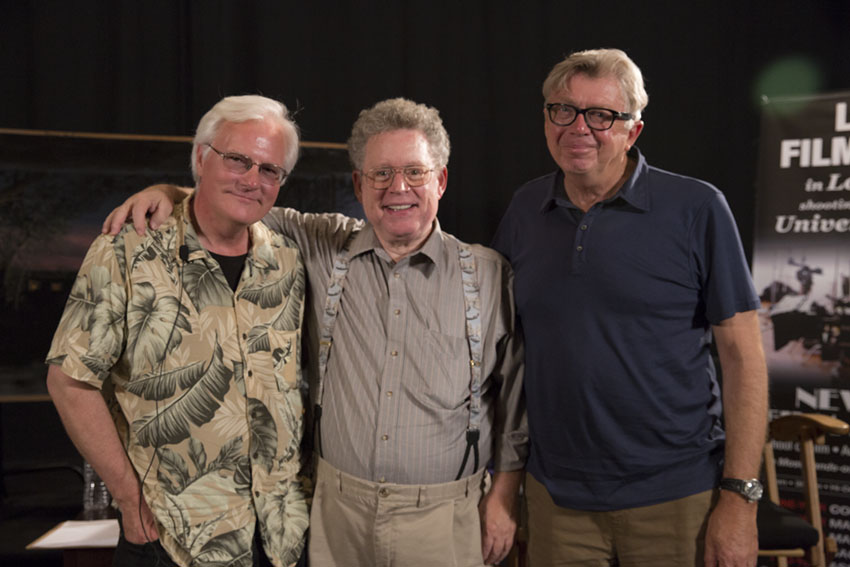
New York Film Academy Los Angeles recently screened Martin Scorsese’s remake of the classic film Cape Fear. The guests for the event were master matte painter Syd Dutton, who was responsible for creating the stunning settings throughout the film including the iconic shot of De Niro leaving prison. This image left such an indelible sense memory for movie goers that it was parodied in a Simpson’s episode where Side Show Bob leaves prison. Our other guest was visual effects supervisor Bill Taylor, who oversaw the trick camerawork on the picture. By happenstance, the moderator was our co-chair of animation Mark Sawicki, who had worked with Syd and Bill on the picture and was responsible for shooting the final composites of the matte paintings.
The conversation started with insights into the prison shot. Bill said that the shot was originally designed for De Niro, playing “Max Cady”, to walk below the frame but Scorsese wanted him to walk directly into the camera. A special ramp was built that allowed the actor to do just that. Mark shared that the last few frames of the shot cut from the film showed De Niro (always in character) apparently licking the lens. Because of the compositional change, the shot became much more complex, involving hand drawn silhouettes of the actor allowing him to appear in front of the painting. Mark recalled that the shot took eight hours to execute, with a fan blowing on the camera motor that had to run at extremely slow speed to prevent it from burning out.
Syd said that the older studio system allowed for tremendous care and planning to create the seamless shots that appear in the film. One thing he shared with the current generation of matte painters is to always remember that the Earth only has one sun and one horizon line. Adhering to these facts is essential to create a believable and realistic painting.
Bill related that lighting De Niro on fire was accomplished by a stunt double. The principal actor pretended to be on fire with nothing more than interactive light hitting the set. At a later date, a stunt double dressed in black against a black background, was set on fire and photographed. The stuntman mimicked De Niro’s performance and the footage of the animated flames were then composited over De Niro.
In closing, Bill shared the value of control and advocated that shooting the real thing as much as is possible, limits variables and allows the image to remain based in reality.
Thanks Syd and Bill for sharing a master’s approach for creating seamless visual effects shots in a classic film!
